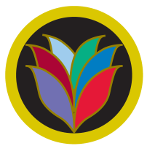The AUC: Then and Now
Creator: Dr. F. Allen
Course Title: Morehouse English 102: English Composition
Assignment Description:
For this two-part assignment, students will write two short papers, the first using ethnographic observation and the second using archival research.
For the observation report students will conduct primary research by engaging in ethnographic observation, identifying a particular AUC site that are often frequented; for example, the cafeteria, your dorm, a classroom, the library. Students should visit the selected site at least three times, observing the people and collecting artifacts. Artifacts can be anything within a site that is reflective of it, for instance, fliers distributed throughout a dormitory or a newsletter announcing some program at the library.
As students visit the site, they should take notes on what they observe:
- The People–Who is there? What are they doing? What are they wearing? What conversations are they having? What language do they use? Why are they speaking? Why are they engaged in a certain activity? What does the student learn from the encounters they have with people in the organization?
- The Setting: Where exactly are they as they observe? What does the place/environment look, sound, smell like? Is there anything or anyone about the place that you find particularly interesting? Why?
- Time—What time of day is it when they are conducting your observation?
After conducting their observations, students will write a three-page observational report in which they present their observational finds and reflect on what their findings say about life at the AUC and about life in general.
For the archival report, students will investigate primary sources within the Archives Research Center that detail the site they chose in their observation report. Some examples of collections include yearbooks, student newspapers, school vertical files and photograph collections.
As students review their findings within the archives, they should take notes on what they discover:
- The People–Who photographed are recorded as being there? What were they doing? What were they wearing? What conversations were had? What language did they use? Why were they speaking? Why were they engaged in a certain activity? What can you infer was learned from the encounters that people had within the organization?
- The Setting: Where exactly was this site located? What did the place/environment look and/or sound? Was there anything or anyone that was particularly interesting? Why?
- Time—What year was the evidence created?
After, students will write a three-page archival report in which they present the information and material discovered on their particular site and reflect on their findings in the archival record. The report should also answer the following questions; how are those sites similar and different, have they changed, and if so why or how?
☛ Learning Outcomes
Students will be able to:
⚬ Gain experience with ethnographic research.
⚬ Gain experience with using primary source documents.
⚬ Conduct archival research.
⚬ Read and navigate archival finding aids.
⚬ Read and navigate Digital Commons.
⚬ Gain experience in handling and proper care of archival materials.
☛ Preparation for Assignment
⚬ Faculty should schedule an instruction session with the Archives Research Center
☛ Deliverables:
⚬ Observational report in the form of a three (3) page essay
⚬ Archival report in the form of a three (3) page essay
Recommended Artwork/Archival Collections:
⚬ Atlanta University Printed and Published Materials
⚬ Clark Atlanta University Photographs
⚬ Morehouse College Photographs
⚬ Morris Brown College Photographs


